Refund Guaranteed
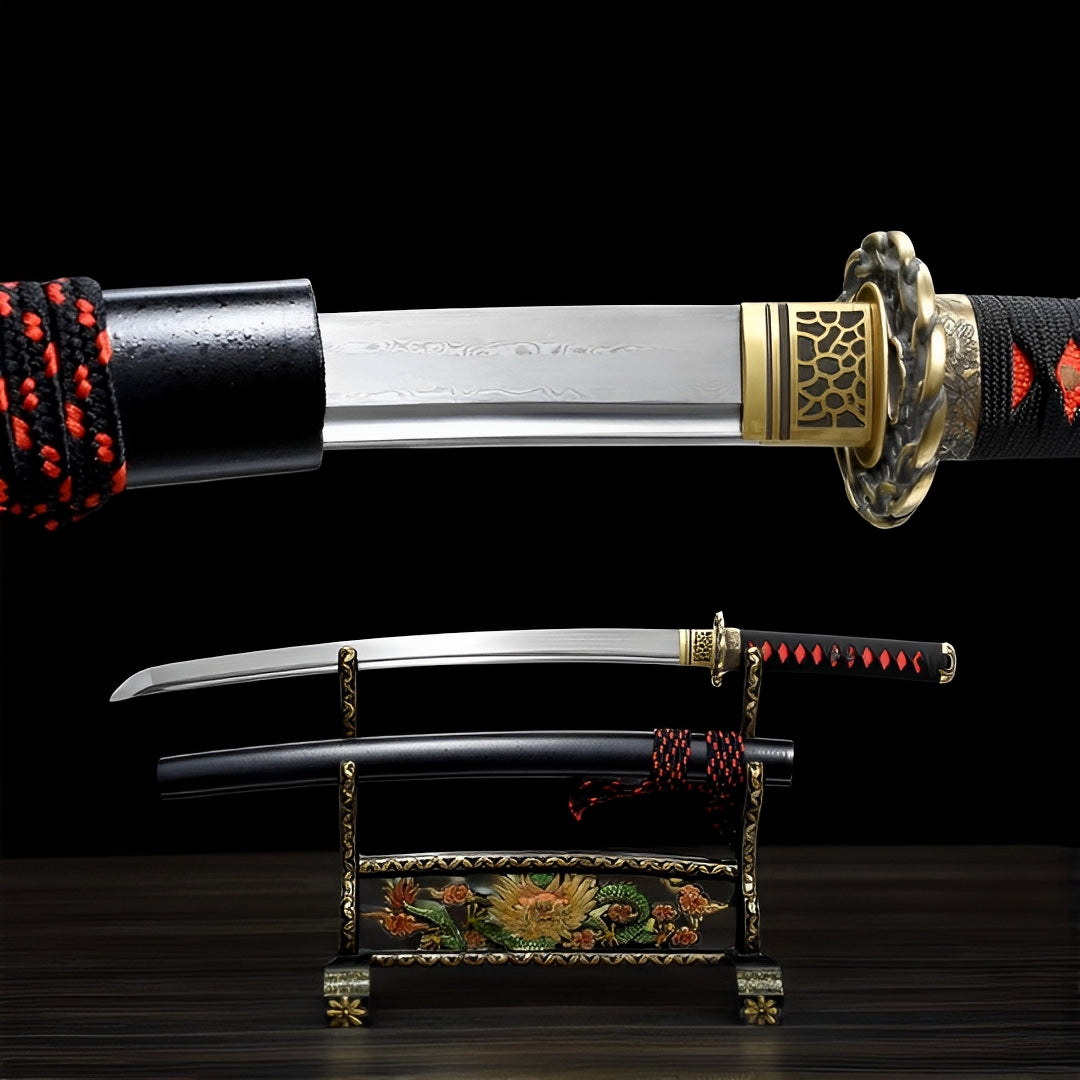
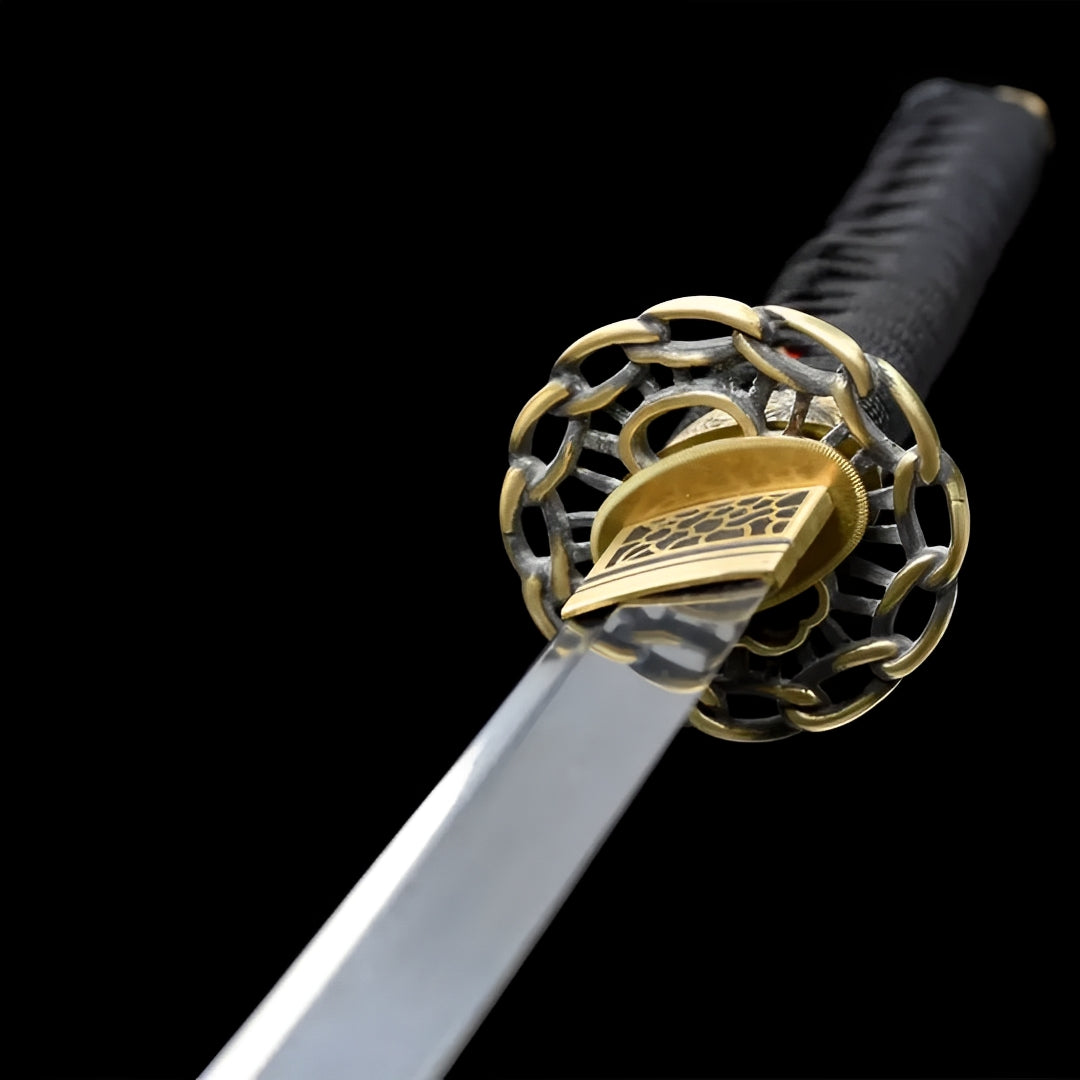
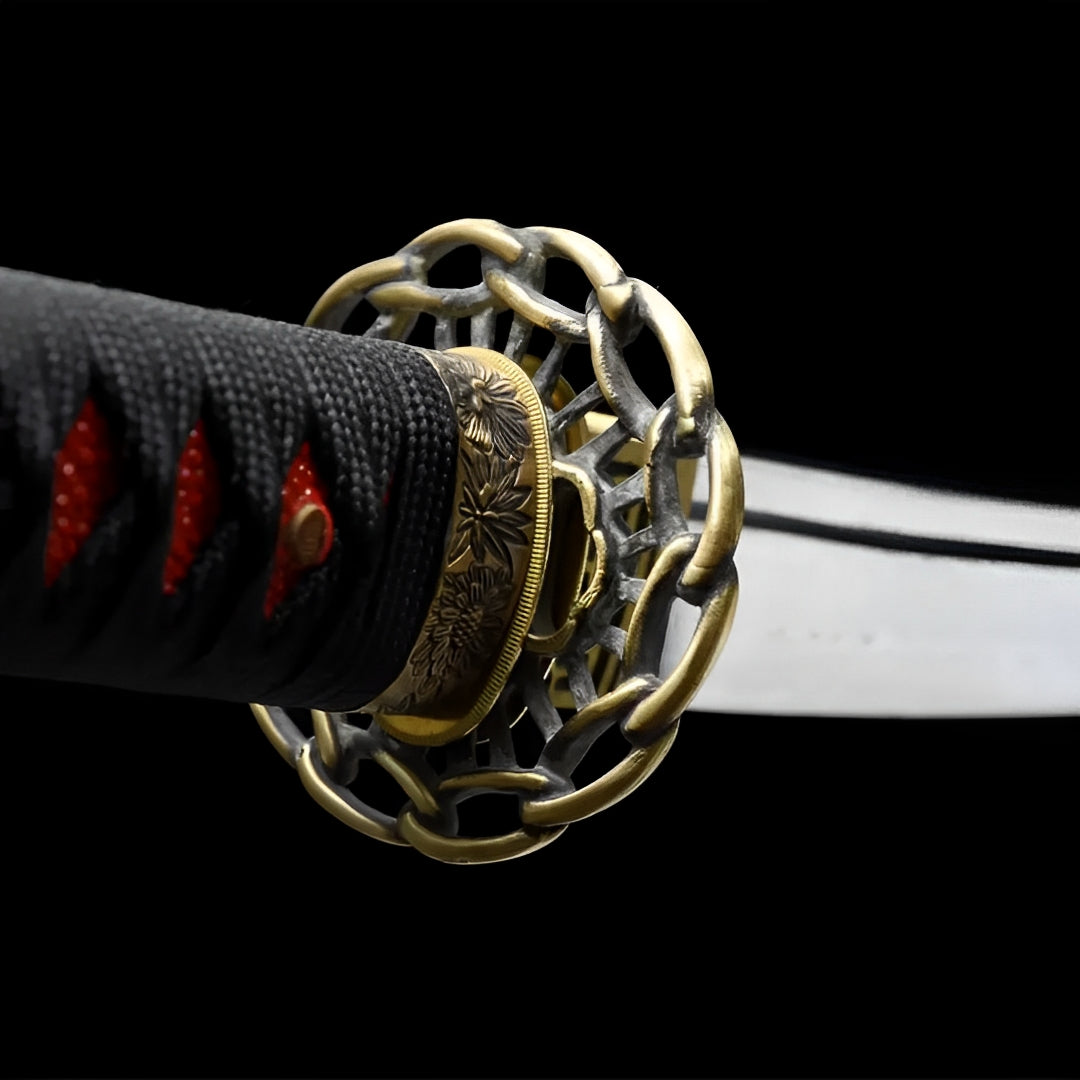
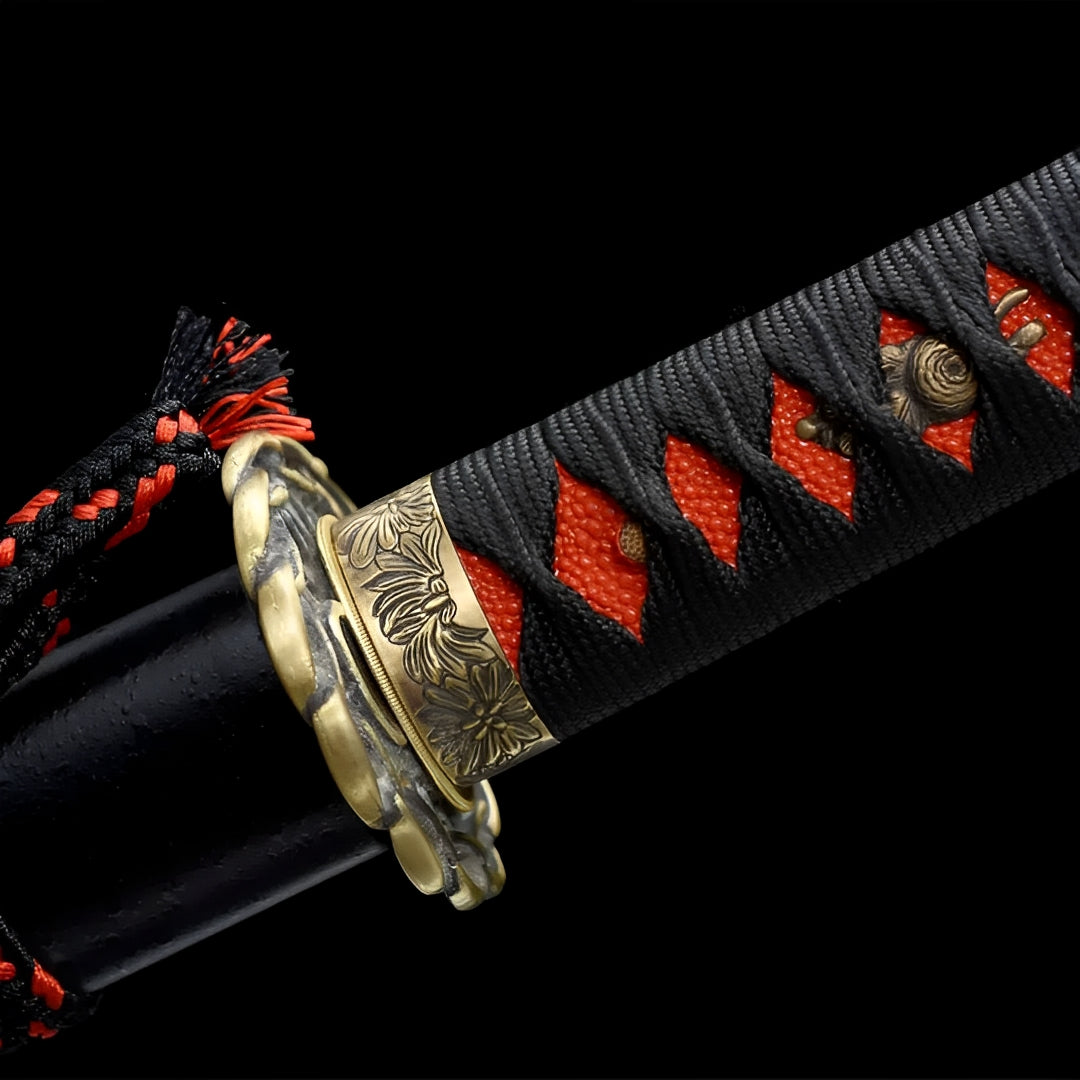
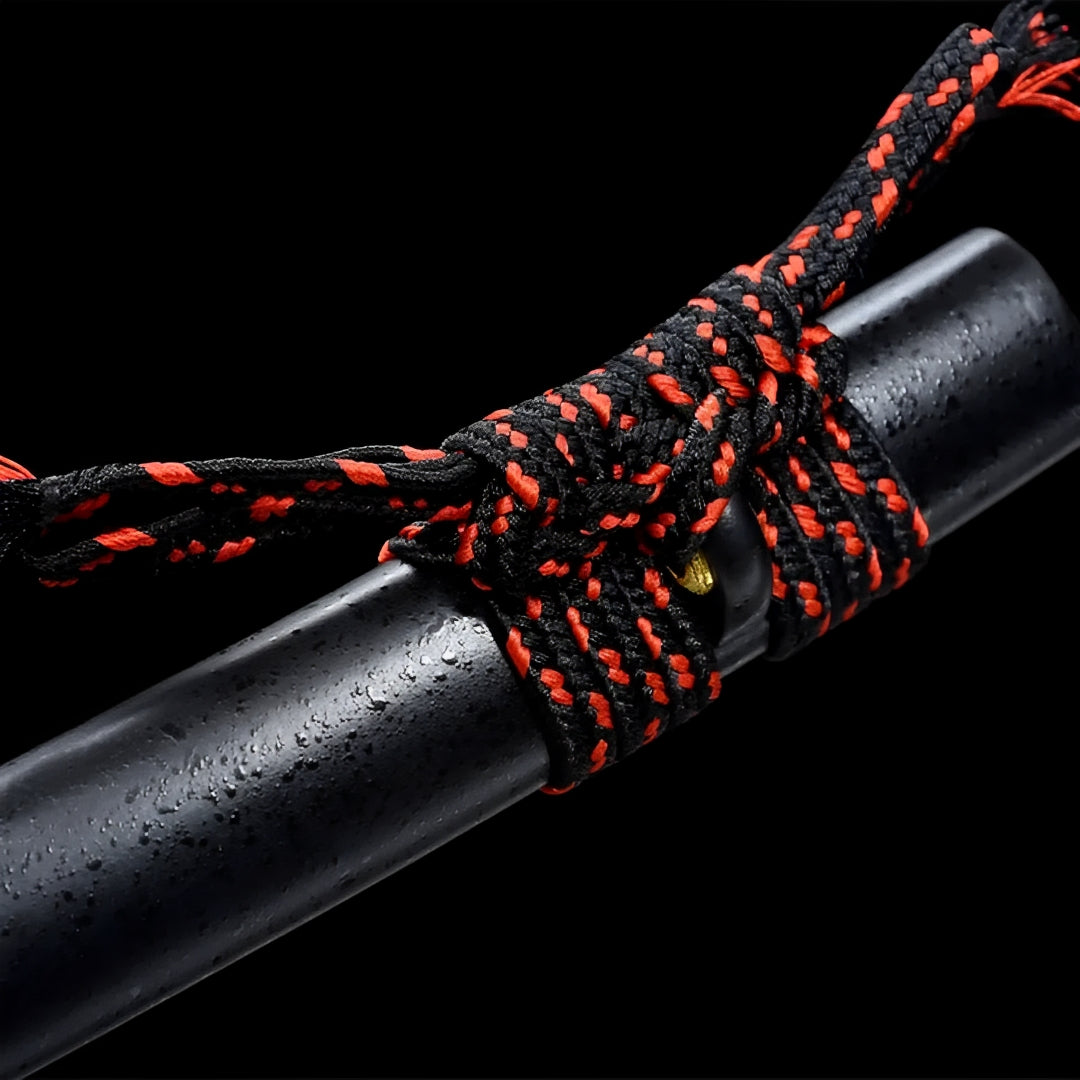
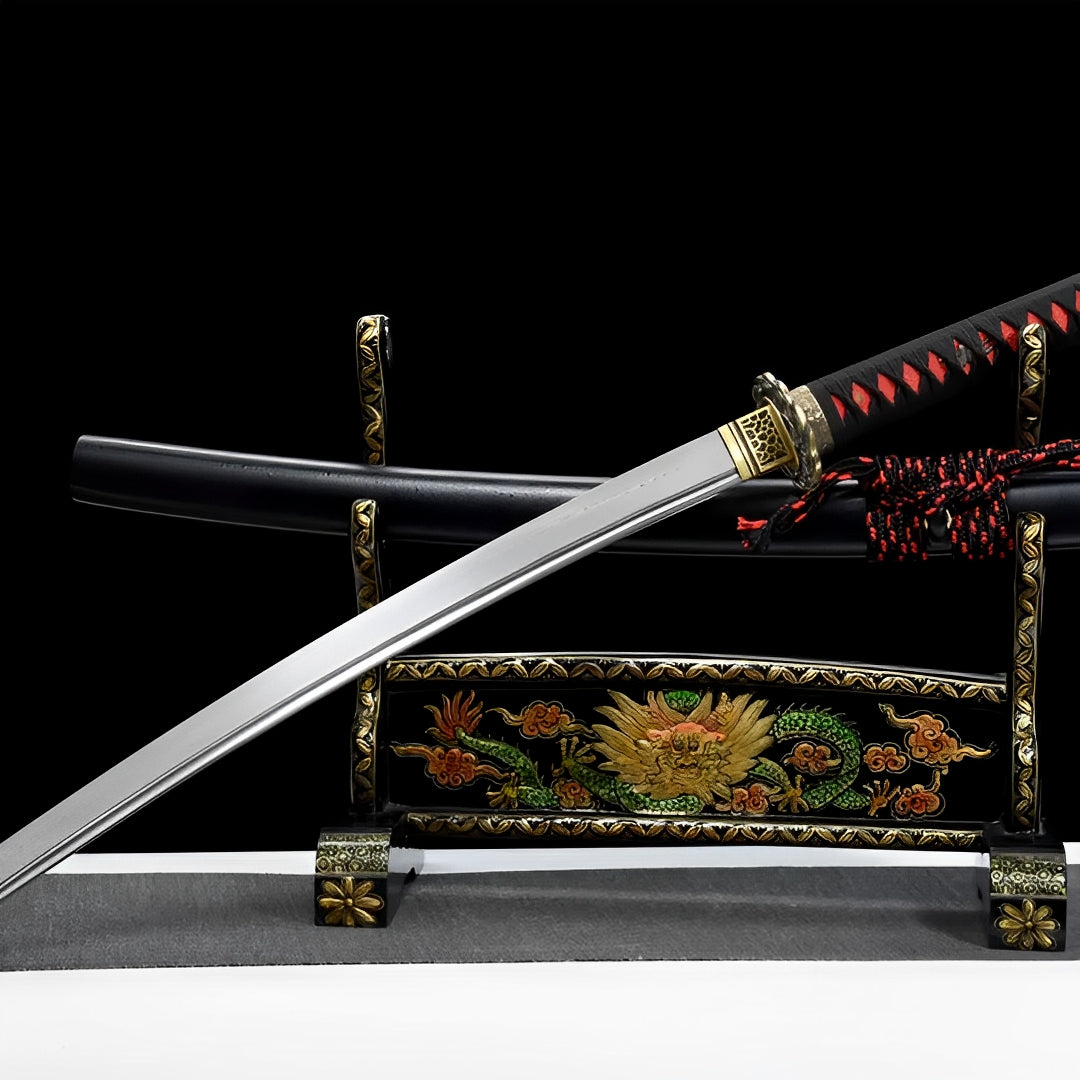
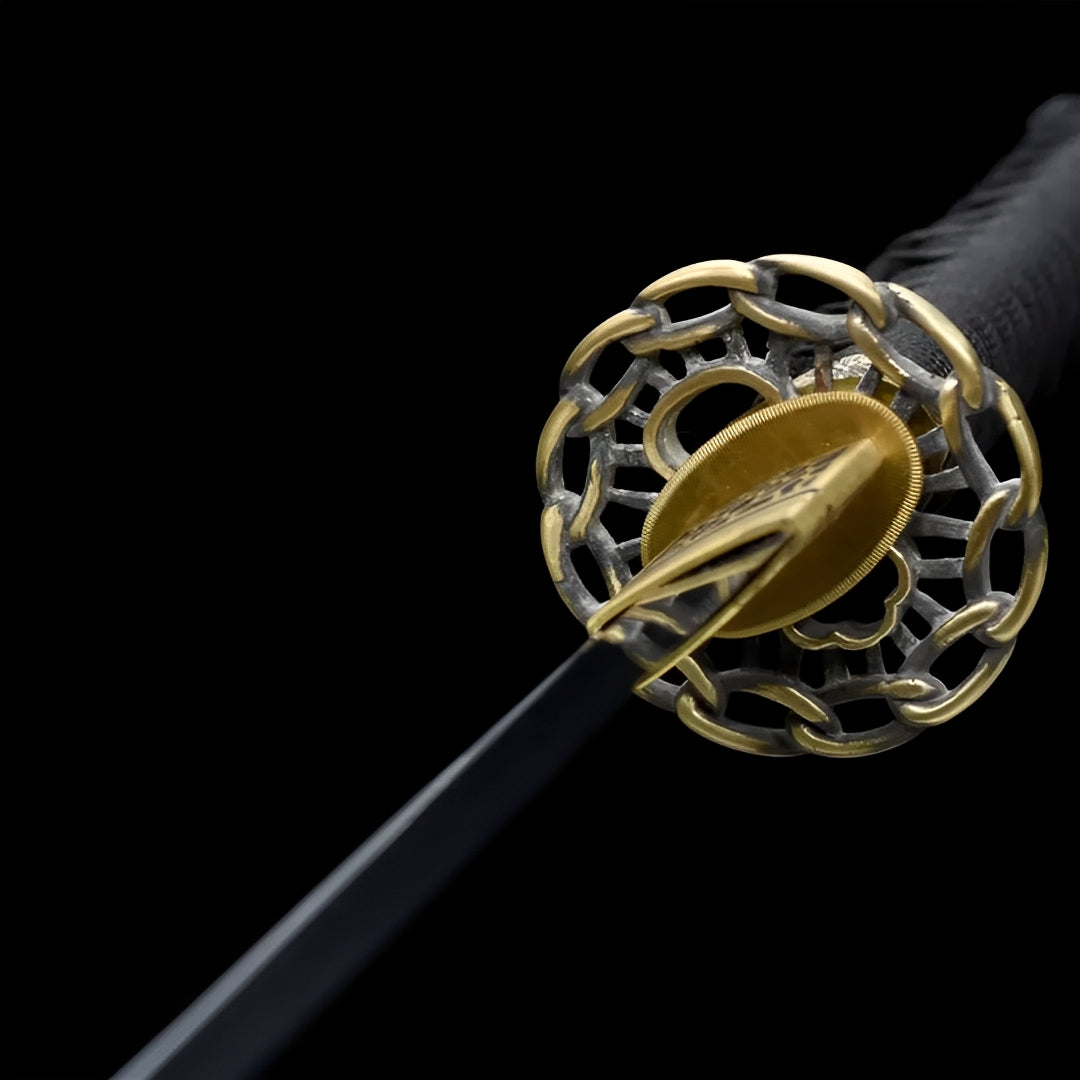
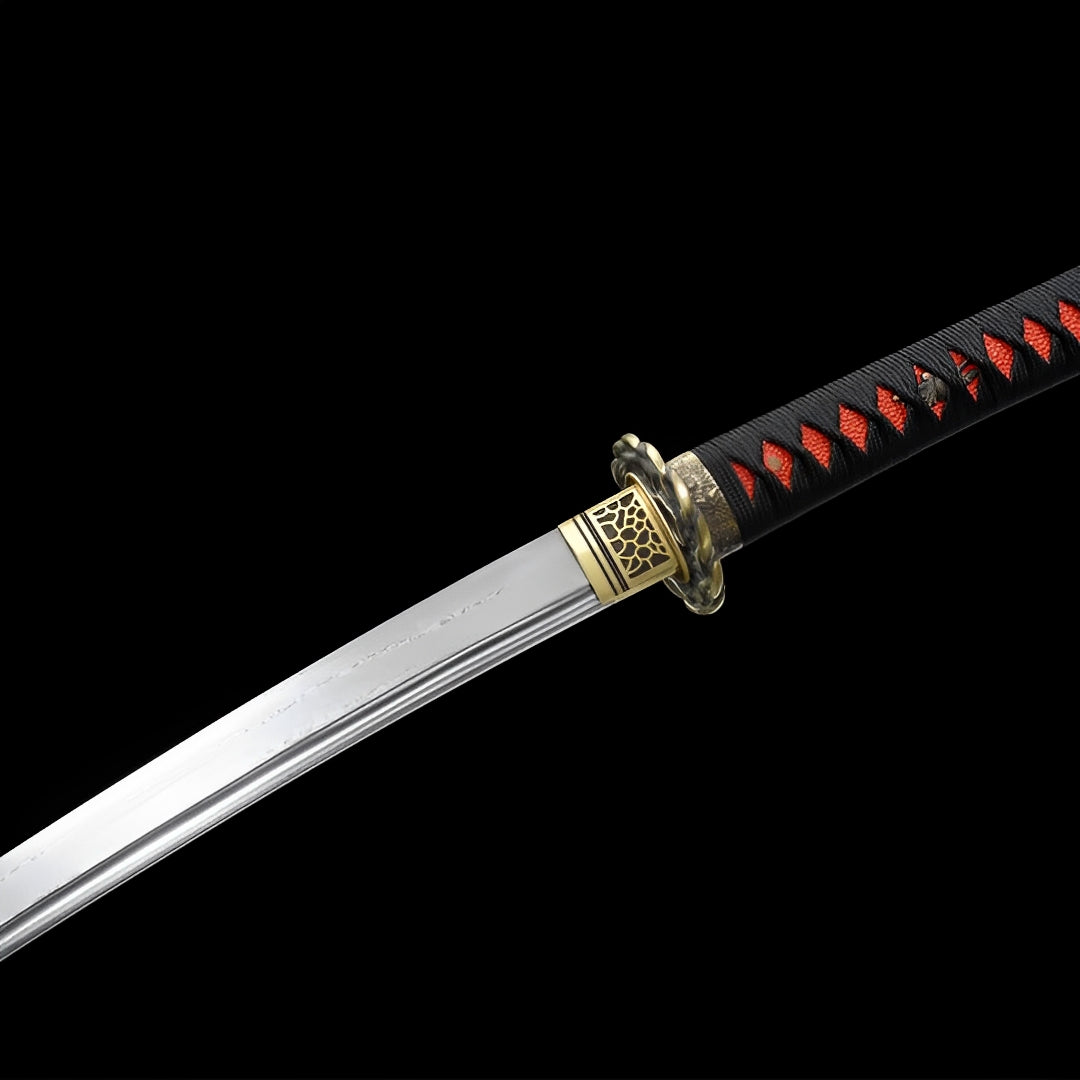
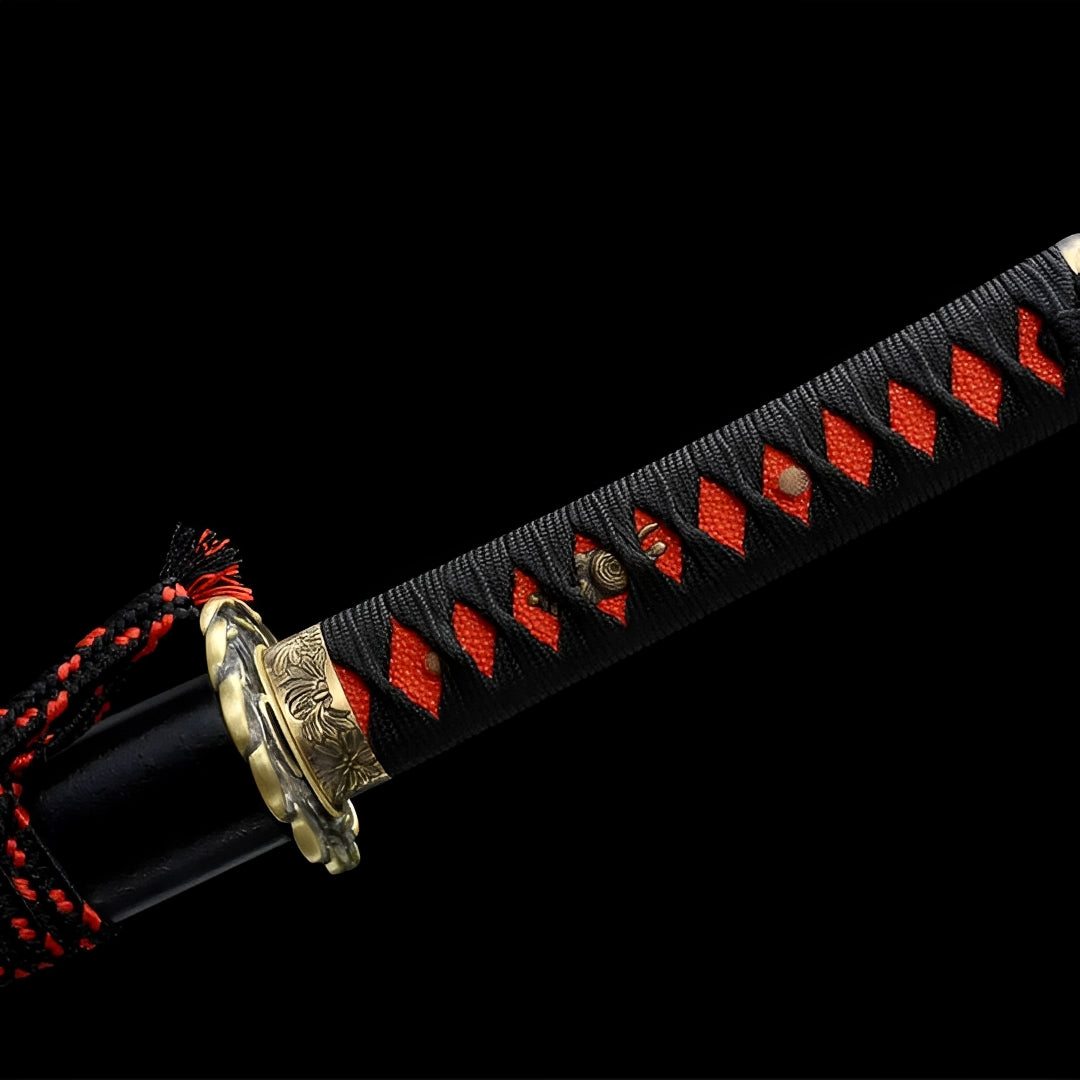
Why choose us
Ships within 48/72h
Forged Blade
Collector Quality
Trusted Globally
Inspired by Japan
Shinku Wakizashi (Damascus Steel) - 真紅の
Popular upgrades
Free Shipping over $250
No Bots, No AI
Refund Guaranteed
Free Shipping over $250
No Bots, No AI
Our team is here to help with any questions or concerns.
We’re always happy to assist you — don’t hesitate to reach out.
Why choose us
Ships within 48/72h
Forged Blade
Collector Quality
Trusted Globally
Inspired by Japan

Shinku Wakizashi (Damascus Steel) - 真紅の
Specifications
- Handcrafted
- SHARP blade
- Blade: Damascus steel
- Tsuba made of copper
- Lacquered wooden saya with pattern
- Tsuka wrapped in synthetic ray skin
- Tsuka-ITO made of cotton
- Thick red and black sageo cord
- Bamboo mekugi
- Habaki made of copper
- Full tang in the handle
- Total length: 80 cm
- Blade length: 52 cm
- Blade width: 3.5 cm
- Blade thickness: 0.7 cm
-
Handle length: 25 cm
Shinku Wakizashi - Crimson Theater Damascus Blade
Command the stage with the Shinku Wakizashi, where blood-red accents slash through midnight black like arterial spray across shadows. This theatrical Damascus wakizashi refuses restraint - folded steel patterns ripple across mirror-polished blade, crimson ito threading weaves through ebony wrapping, while the display stand erupts in full floral glory suggesting shrine offerings rather than weapon storage. For collectors who understand that some swords don't whisper; they perform.
Damascus Steel Hypnosis
The soul of this folded steel wakizashi reveals itself in the blade's mesmerizing pattern - countless layers of high and low carbon steel folded repeatedly during forging, creating organic swirls that seem to flow like smoke or water frozen mid-movement. No two Damascus blades display identical patterns; the steel's grain becomes unique fingerprint identifying each sword as singular artwork.
Traditional Japanese swordsmiths called this technique orikaesu tanren (折り返し鍛錬 - fold-back forging), hammering hot steel flat, folding it over itself, reheating, and repeating dozens or hundreds of times. Each fold doubles the layer count exponentially - ten folds create 1,024 layers, fifteen folds produce 32,768 distinct steel strata.
This labor-intensive process serves dual purposes. Functionally, folding removes impurities while distributing carbon content evenly, creating steel that holds edges longer than single-composition metal while maintaining flexibility preventing catastrophic shattering. Aesthetically, the layered structure creates patterns that transform utilitarian tool into mesmerizing visual experience.
The Shinku's Damascus work shows particularly fine grain - tight, regular waves suggesting master smith's precise temperature control and consistent hammer strikes. Coarser patterns indicate rushed work or insufficient skill; refined patterns like these demonstrate the hundreds of hours invested in forging this premium wakizashi blade.
When light strikes the polished surface at proper angles, the Damascus pattern emerges like secret message written in steel - dark waves contrasting with brighter layers, the swirls seeming to move as viewing angle changes. This reveal moment transforms drawing the blade from functional act into ceremonial unveiling of hidden beauty.
Crimson Drama Unleashed
The name Shinku (深紅 - deep crimson) announces this wakizashi's theatrical character through color symbolism impossible to ignore. While many Japanese swords favor subtle earth tones or monochrome restraint, the Shinku embraces drama through strategic crimson deployment that catches eyes across rooms.
The black ito handle wrapping features vivid red threading woven through in diamond pattern, creating visual rhythm of darkness punctuated by blood-bright accents. This isn't subtle suggestion but bold statement - the red reads as fresh arterial spray, war banners flying in wind, or maple leaves at peak autumn color moments before falling.
Japanese color symbolism associates red (aka - 赤) with life force, passion, courage, and vitality. Samurai wore red armor components believing the color intimidated opponents while inspiring allies. A red-accented battle-ready wakizashi channels that psychological warfare through color alone, announcing the wielder's aggressive intent before steel ever leaves scabbard.
The crimson threading also serves practical purpose during combat - the bright color provides visual reference points confirming proper grip positioning even in chaotic melee situations or low-light conditions where black-on-black details disappear into shadow.
Historical samurai understood that weapons are theater. The moment you draw blade, you perform for audience of opponents, allies, witnesses. The Shinku's crimson accents ensure that performance commands attention, that observers remember this sword and its wielder long after encounter concludes.
Ornate Display Majesty
The included presentation stand elevates storage into spectacle. Unlike simple wooden kake-dai that merely hold swords, this elaborate platform features full decorative program transforming functional support into artwork worthy of sword it cradles.
The stand's front panel explodes with traditional Japanese motifs rendered in vibrant colors - what appears to be chrysanthemums, peonies, or other auspicious flowers in reds, golds, and greens against dark background. These floral designs reference celebratory occasions, noble status, and aesthetic sophistication.
Chrysanthemums particularly carry imperial associations - the Emperor's throne is called the Chrysanthemum Throne, and sixteen-petal chrysanthemum serves as imperial family crest. Displaying swords with chrysanthemum imagery subtly invokes that noble connection, suggesting the blade deserves treatment befitting imperial treasures.
Golden feet elevate the stand, their metallic gleam catching light and creating visual anchors at composition's base. This gilded foundation literally and figuratively supports the sword above, demonstrating that proper presentation requires attention extending beyond the weapon itself to encompass entire display context.
The ornate stand positions this decorative wakizashi firmly in ceremonial rather than utilitarian category. This isn't daily-carry blade casually tossed in corner but treasured piece receiving reverent presentation worthy of its craftsmanship and symbolic significance.
Traditional Japanese aesthetic principles sometimes favor restraint, but equally valid tradition celebrates opulence during appropriate occasions - festivals, weddings, formal ceremonies where abundance demonstrates prosperity and joy. The Shinku's elaborate presentation follows that celebratory aesthetic philosophy.
Theatrical Presentation Heritage
Certain historical contexts demanded swords transcending mere functionality to become props in carefully choreographed social theater. Daimyo receiving guests presented weapons as conversation pieces and status symbols. Shogun distributed gifted swords to favored retainers, the blades' beauty reflecting the giver's taste and generosity.
This ceremonial wakizashi continues that tradition of sword-as-performance-piece. It's designed for moments when appearance communicates as powerfully as the steel within - formal displays where collectors showcase their finest acquisitions, demonstration events where instructors want premium examples, or presentations where weapons start conversations about craftsmanship and cultural heritage.
The combination of Damascus blade, crimson accents, and ornate display creates layered visual experience rewarding examination at multiple distances. From across room, the red threading and golden stand catch attention. At mid-distance, the elaborate tsuba details and floral display motifs emerge. Close examination reveals the Damascus pattern's hypnotic complexity.
This multi-distance appeal makes the Shinku exceptional for spaces where viewers approach gradually - entrances where guests transition from doorway to closer inspection, galleries where pieces receive sequential attention, or rotating displays where the same sword reveals different aspects depending on visitor positioning.
Modern collectors continuing this theatrical tradition appreciate that certain pieces exist not despite their dramatic flair but because of it. Collections need variety - subtle pieces demonstrating restraint, aggressive examples radiating power, and theatrical specimens like the Shinku that celebrate sword ownership as performance art.
Stage-Ready Collection
This ornate Japanese sword attracts specific collector sensibilities - those who appreciate Damascus steel artistry, enjoy bold color statements, value elaborate presentation, or seek pieces that dominate spaces rather than quietly occupying them.
The Shinku works magnificently as collection centerpiece or rotating spotlight piece. Its theatrical character makes extended solo display impactful, while pairing with contrasting swords in group arrangements demonstrates the owner's appreciation for aesthetic diversity.
Display considerations should amplify rather than compete with the sword's inherent drama. Dramatic lighting from multiple angles brings out Damascus patterns while making crimson threading glow. Neutral backgrounds allow the colors to pop without visual confusion. Consider positioning where the ornate stand remains visible, as it forms essential component of the complete presentation package.
Perfect for collectors specializing in Damascus steel weapons, martial arts instructors wanting impressive demonstration pieces that capture student attention, interior designers curating spaces where bold statements define character, theater and film prop masters seeking authentic yet visually striking pieces, or anyone building collections where each sword explores different aesthetic possibilities.
The Shinku particularly appeals to those who've accumulated subtle, restrained pieces and now seek permission to embrace decoration without apology. It proves that traditional Japanese craftsmanship includes room for theatrical expression alongside minimalist philosophy.
Care Instructions: Clean Damascus blade immediately after handling to prevent fingerprint etching. Apply thin oil coating emphasizing the pattern visibility. The crimson ito threading may fade if exposed to direct sunlight - display away from windows. Dust the ornate stand regularly, using soft brushes reaching into decorative relief details. Store blade properly when not displayed, as Damascus steel requires same maintenance protocols as traditional carbon steel.
Let the crimson flow. The Shinku Wakizashi performs magnificently.
Legal Disclaimer
By purchasing from Katana Corp, you acknowledge and agree that:
- You are at least 18 years of age (or the age of majority in your jurisdiction).
- You are solely responsible for verifying and complying with all local laws and import regulations before placing an order.
- Some countries prohibit the importation of swords entirely. Katana Corp is not responsible for orders delayed, seized, or refused by customs authorities.
- All katanas and related products are sold strictly as decorative and display items. They are not intended or certified for combat use.
- Depending on the jurisdiction, swords may legally be considered bladed weapons, subject to specific restrictions or prohibitions.
- Katana Corp disclaims all liability for any injury, damage, or legal consequences resulting from misuse, abuse, or unlawful use of its products.
For full details, please refer to our Terms of Service.
Care & Maintenance
To maintain your katana's appearance and performance over time, we recommend:
- Regularly wiping the blade with a soft cloth to remove fingerprints and moisture.
- Applying a light coat of choji oil to prevent rust (for carbon steel blades).
- Storing the sword in a dry place, preferably inside its saya.
- Avoiding direct contact with hard surfaces to preserve sharpness and finish.
For more care tips, check our full maintenance guide in the FAQ section.
Behind the Blade
Every katana we offer carries the essence of centuries-old craftsmanship.
More than just a weapon, the katana symbolizes discipline, honor, and mastery.
Our artisans draw inspiration from traditional forging methods to ensure each blade reflects the spirit of the samurai — strength, precision, and soul.
Owning one is not just about aesthetics — it’s about carrying a piece of that legacy.
User Experience
This katana is designed to offer a perfect balance between blade and handle.
Its ergonomic tsuka (handle) allows a secure two-handed grip, while the weight distribution ensures smooth, fluid movement.
Whether for training, display or cutting practice, handling feels natural and precise.
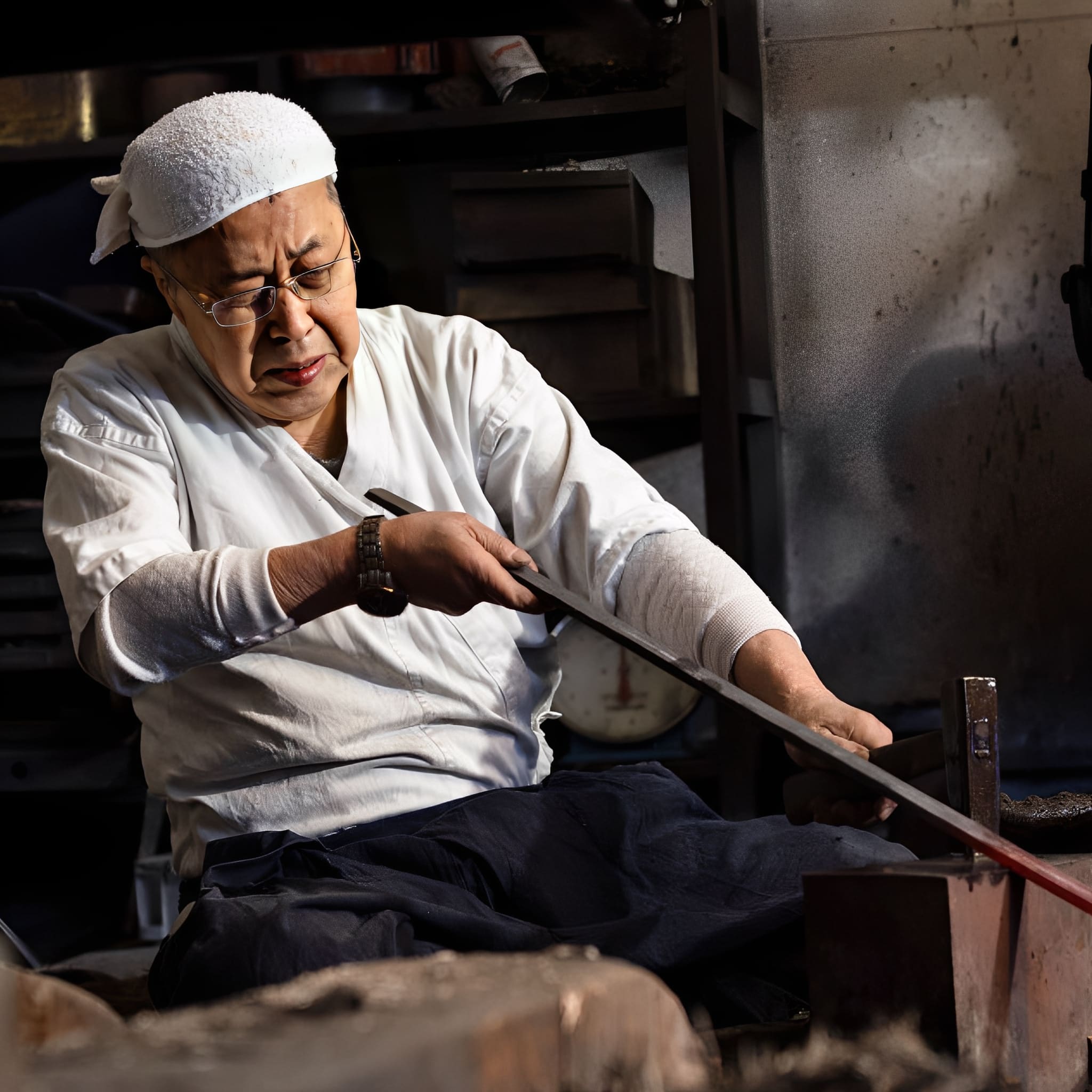
The Art of Traditional Forging
Each katana we craft is born from centuries of samurai tradition.
Our master smiths shape every blade by hand, folding the steel to achieve unmatched strength, flexibility, and beauty.
This time-honored process is not just about creating a weapon? it’s about preserving a legacy of discipline, honor, and artistry.
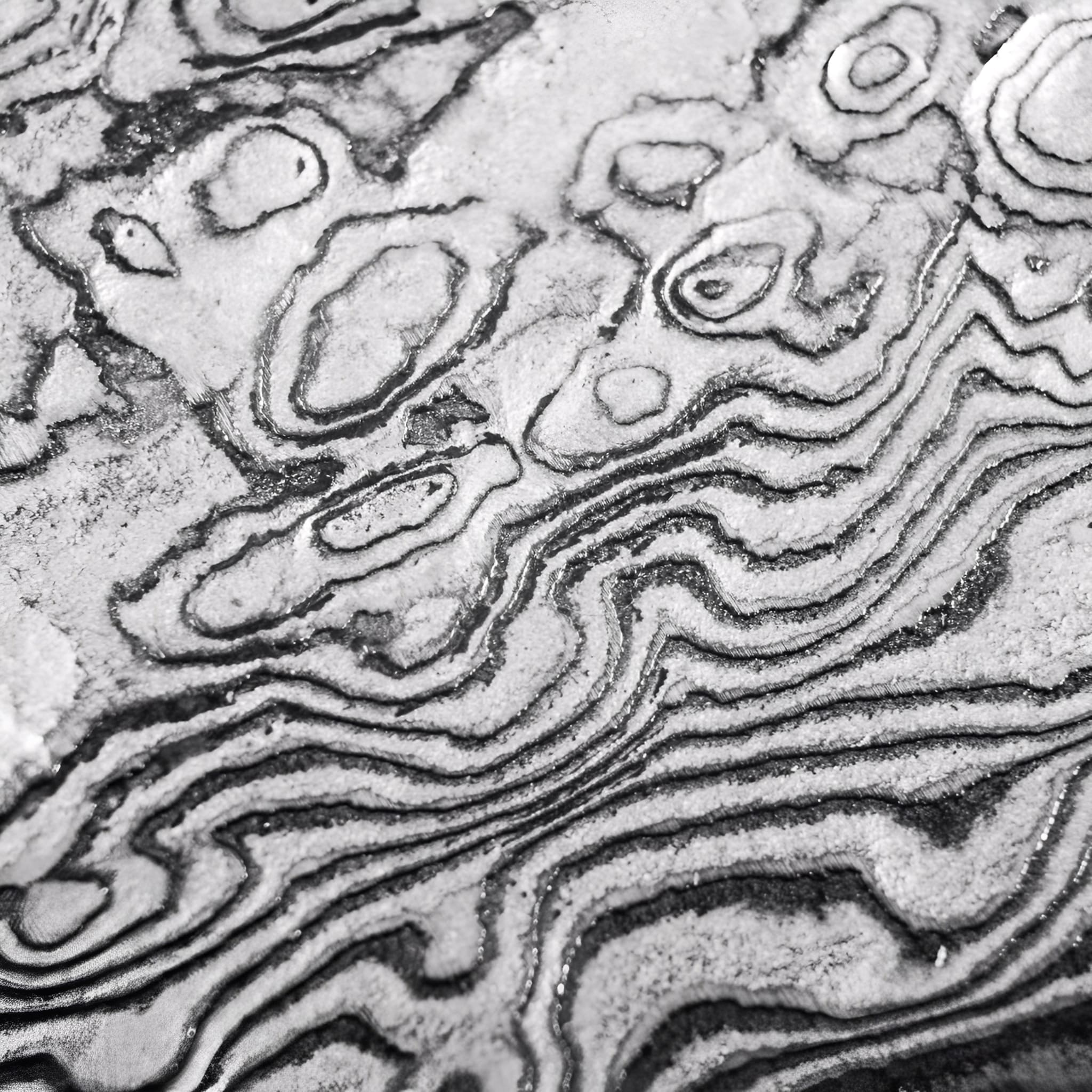
Materials Chosen Without Compromise
We select only the highest-grade steels and authentic fittings to ensure every katana is both a masterpiece and a reliable companion.
From the flawless hamon line to the perfectly balanced tang, each detail is carefully inspected to meet the highest standards of performance and aesthetics.
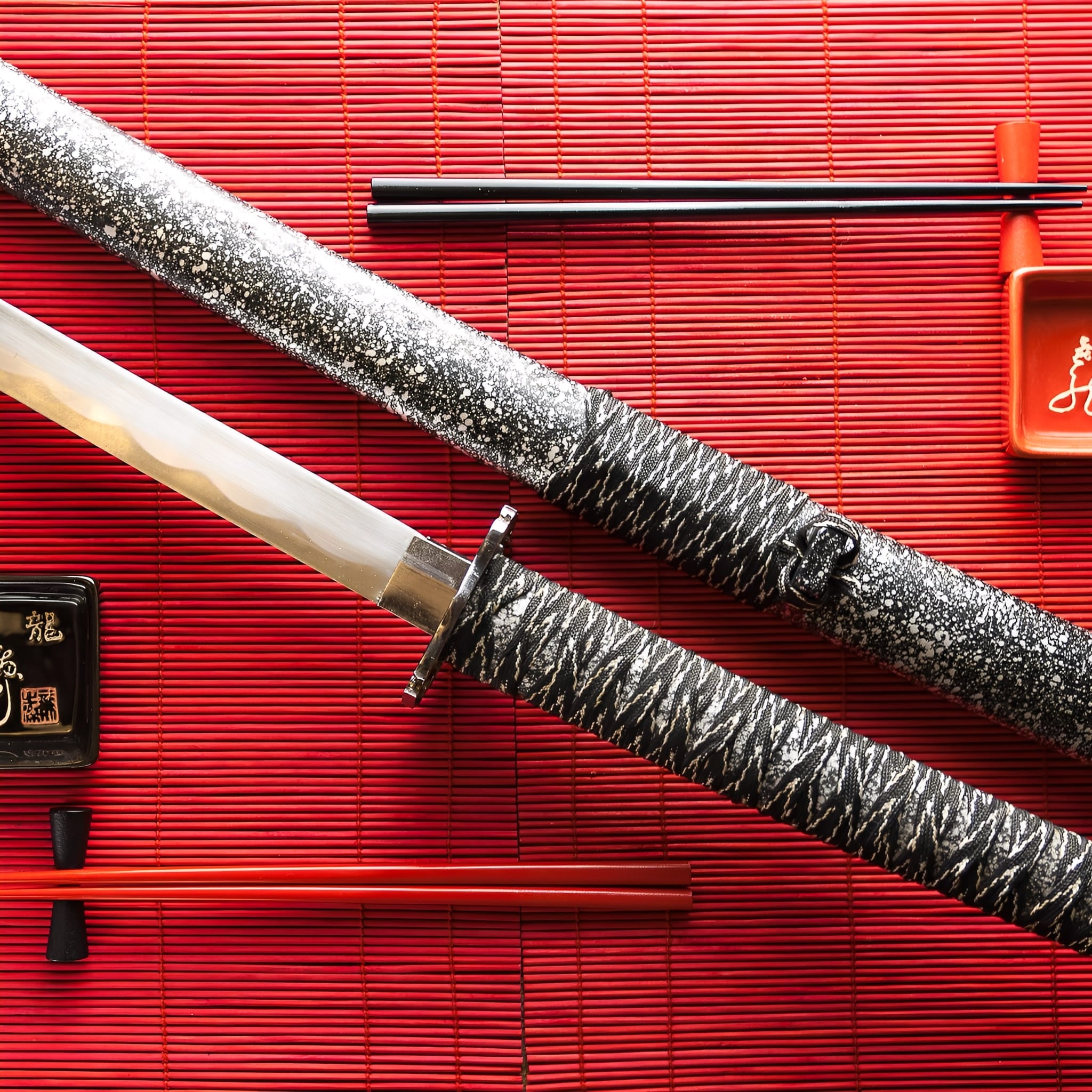
More Than a Sword, A Lifelong Legacy
Owning a handmade katana is an experience that goes beyond the blade itself. It’s holding history, tradition, and craftsmanship in your hands.
Whether displayed as a work of art or wielded with precision, your katana will stand as a symbol of timeless skill and dedication for generations to come.
-
Key Destinations
United States: 5–7 days
Canada: 5–7 days
Australia: 6–9 days
Denmark: 4–6 days
Netherlands: 3–5 days
Sweden: 4–6 days
Switzerland: 3–5 days
Finland: 5–7 days
Singapore: 6–8 days -
Central European Partners
France: 2–3 days
Germany: 3–5 days
Spain: 4–6 days
Italy: 4–6 days
Belgium: 3–5 days
Austria: 4–6 days
Ireland: 4–6 days
Poland: 4–6 days
Portugal: 4–6 days -
Extended EU Network
Czechia: 4–6 days
Hungary: 4–6 days
Slovakia: 4–6 days
Slovenia: 5–7 days
Romania: 5–7 days
Bulgaria: 5–7 days
Croatia: 5–7 days
Serbia: 5–7 days
Estonia: 5–7 days
Latvia: 5–7 days
Lithuania: 5–7 days
Luxembourg: 3–5 days
Greece: 5–8 days -
FAQ’s
Visit our FAQs page to find answers to common questions.